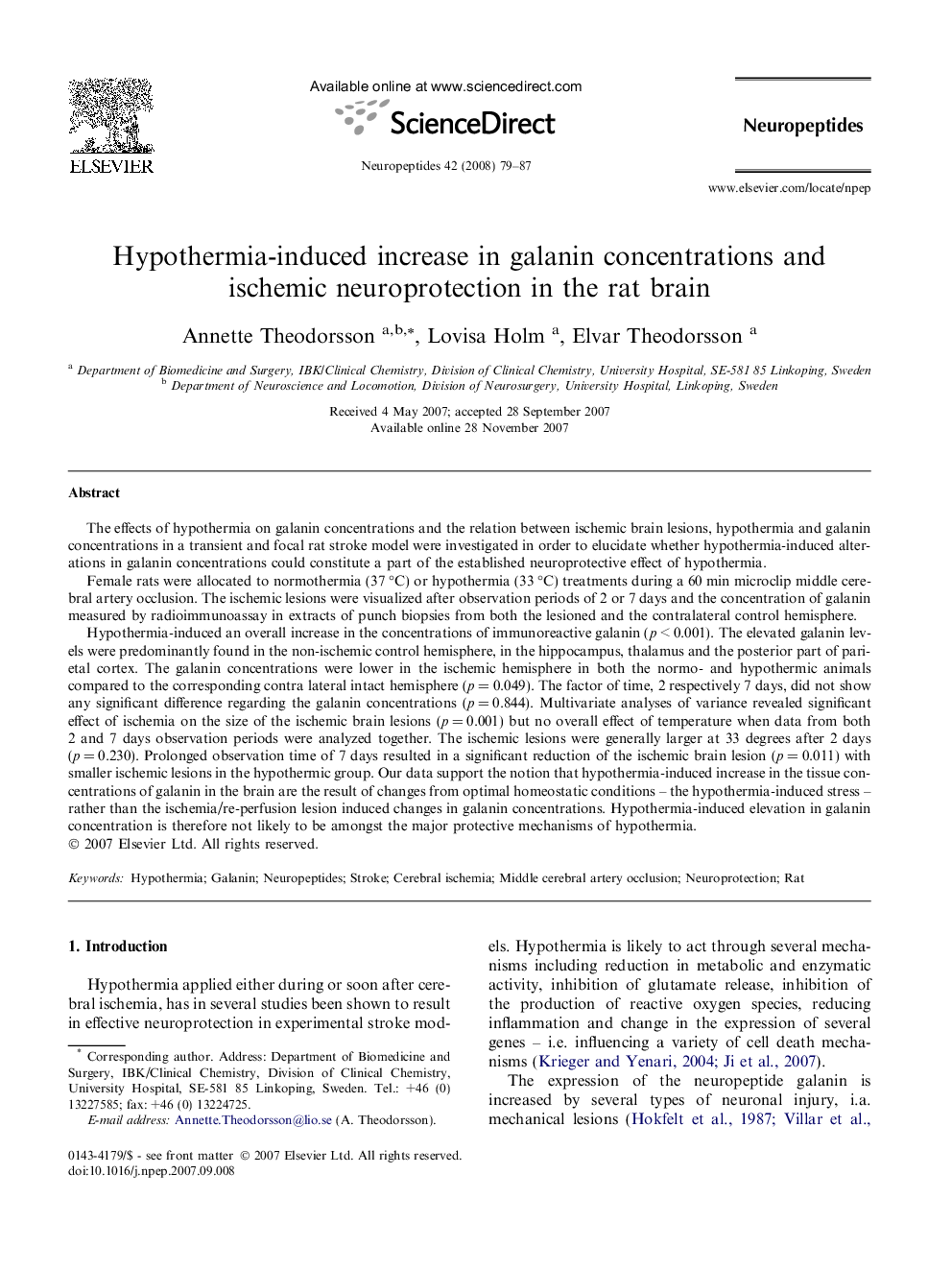| Article ID | Journal | Published Year | Pages | File Type |
|---|---|---|---|---|
| 2808323 | Neuropeptides | 2008 | 9 Pages |
The effects of hypothermia on galanin concentrations and the relation between ischemic brain lesions, hypothermia and galanin concentrations in a transient and focal rat stroke model were investigated in order to elucidate whether hypothermia-induced alterations in galanin concentrations could constitute a part of the established neuroprotective effect of hypothermia.Female rats were allocated to normothermia (37 °C) or hypothermia (33 °C) treatments during a 60 min microclip middle cerebral artery occlusion. The ischemic lesions were visualized after observation periods of 2 or 7 days and the concentration of galanin measured by radioimmunoassay in extracts of punch biopsies from both the lesioned and the contralateral control hemisphere.Hypothermia-induced an overall increase in the concentrations of immunoreactive galanin (p < 0.001). The elevated galanin levels were predominantly found in the non-ischemic control hemisphere, in the hippocampus, thalamus and the posterior part of parietal cortex. The galanin concentrations were lower in the ischemic hemisphere in both the normo- and hypothermic animals compared to the corresponding contra lateral intact hemisphere (p = 0.049). The factor of time, 2 respectively 7 days, did not show any significant difference regarding the galanin concentrations (p = 0.844). Multivariate analyses of variance revealed significant effect of ischemia on the size of the ischemic brain lesions (p = 0.001) but no overall effect of temperature when data from both 2 and 7 days observation periods were analyzed together. The ischemic lesions were generally larger at 33 degrees after 2 days (p = 0.230). Prolonged observation time of 7 days resulted in a significant reduction of the ischemic brain lesion (p = 0.011) with smaller ischemic lesions in the hypothermic group. Our data support the notion that hypothermia-induced increase in the tissue concentrations of galanin in the brain are the result of changes from optimal homeostatic conditions – the hypothermia-induced stress – rather than the ischemia/re-perfusion lesion induced changes in galanin concentrations. Hypothermia-induced elevation in galanin concentration is therefore not likely to be amongst the major protective mechanisms of hypothermia.
